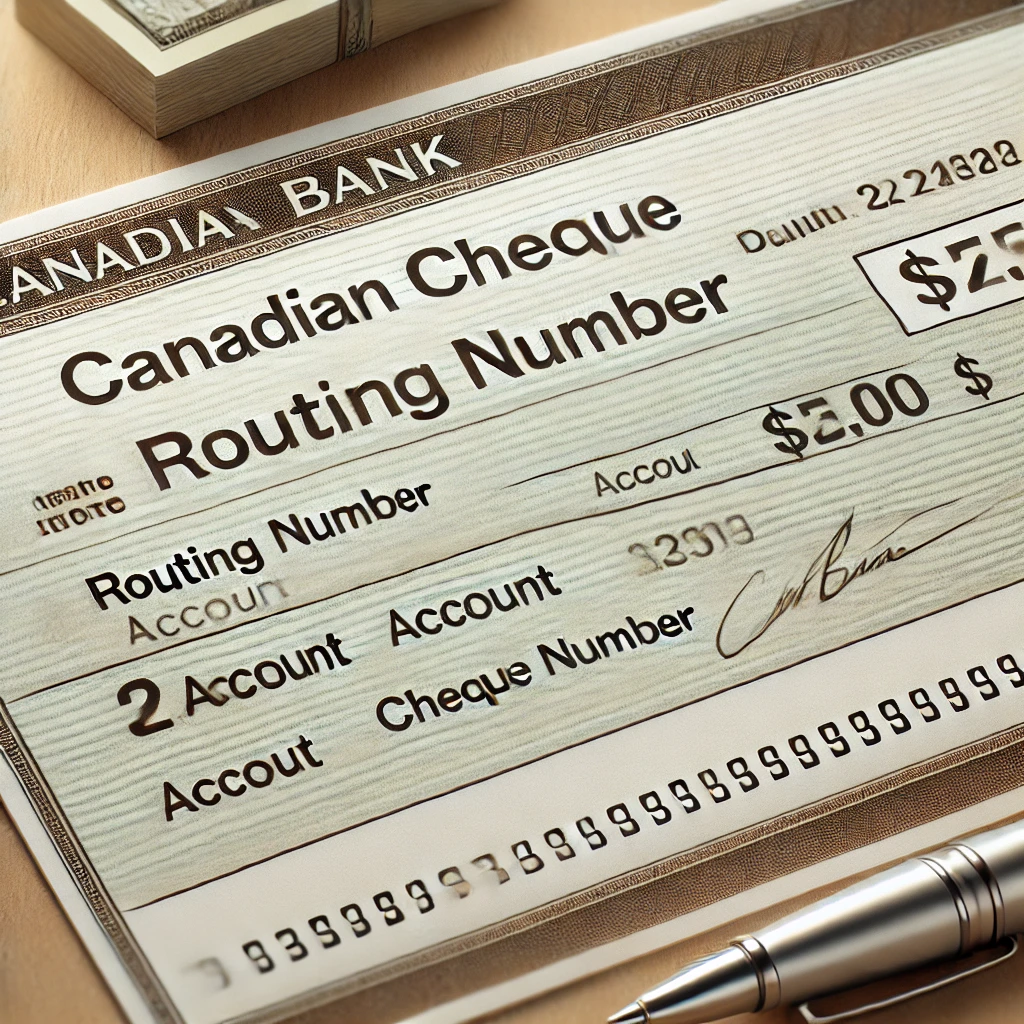What is a Routing Number in Canada?
A routing number, also known as a transit number in Canada, is a unique nine-digit code that identifies a specific financial institution and branch location for electronic transactions. Routing numbers play an essential role in the Canadian banking system, allowing banks to route money accurately and efficiently for domestic and international transactions. This guide explains what a routing number is, how it works, and why you need it for various financial activities.
1. Understanding the Structure of a Canadian Routing Number
A Canadian routing number consists of nine digits, divided into two parts: the institution code and the transit number. This structure identifies both the bank and the specific branch location:
- Institution Code: The first three digits represent the bank or financial institution. For example, Royal Bank of Canada (RBC) uses 003, while Bank of Montreal (BMO) uses 001.
- Transit Number: The remaining five digits identify the specific branch where you opened your account. Each branch has a unique transit number, which ensures accurate routing of funds.
Together, the nine-digit routing number supports smooth transactions by ensuring funds reach the right bank and branch.
2. When Do You Need a Routing Number in Canada?
You’ll need a routing number for various financial transactions, both domestic and international. Here are some common uses:
- Direct Deposits: Employers require your routing number to deposit paychecks directly into your bank account.
- Pre-Authorized Debits: Companies use routing numbers to withdraw payments automatically for bills like utilities, loans, and subscriptions.
- Wire Transfers: Routing numbers help banks identify the correct institution and branch for sending or receiving wire transfers.
- Interac e-Transfers: While e-Transfers typically use email addresses, some larger transfers may require a routing number for accuracy.
- Tax Refunds and Government Payments: The Canada Revenue Agency (CRA) requires your routing number to deposit tax refunds or benefit payments directly into your account.
Using a routing number ensures your transactions proceed accurately and securely, reducing the risk of errors in fund transfers.
3. How to Find Your Canadian Routing Number
You can find your routing number in several places, both online and on printed documents. Here are some methods to locate it:
- On Your Cheques: Look at the bottom of your cheques, where the routing number appears in the format XXXXX-YYY. The five digits represent the transit number, followed by a hyphen and the three-digit institution code.
- Online Banking: Most banks list routing numbers in online banking portals. Look for account details or settings that display your branch’s transit number and the institution code.
- Bank Statements: Your bank statement may include your routing number under account information.
- Bank Website or Customer Service: If you can’t find your routing number on your documents, you can check your bank’s website or call customer service for assistance.
These methods help you access your routing number whenever you need it, whether for direct deposits, payments, or transfers.
4. How Routing Numbers Differ Between Canada and the United States
Routing numbers function similarly in Canada and the United States, but there are some differences in structure:
- Length: Canadian routing numbers contain nine digits, while U.S. routing numbers contain nine digits as well but in a different sequence.
- Format: In Canada, the transit number appears first, followed by the institution code. In the U.S., routing numbers follow a different format and often include an account number immediately afterward.
- Usage for Wire Transfers: Canadian routing numbers work for domestic wire transfers, but you’ll need a SWIFT code, not the routing number, for international transactions.
These differences ensure routing numbers meet each country’s banking system requirements, allowing for secure transactions.
5. The Role of Routing Numbers in Canadian Bank Transfers
Routing numbers streamline fund transfers between accounts, regardless of the type of transaction. Here’s how they function in common transfers:
- Direct Deposits and Withdrawals: Routing numbers guide deposits and pre-authorized debits, enabling employers, utility companies, and lenders to transfer funds accurately.
- Wire Transfers: For wire transfers, routing numbers identify the recipient’s bank and branch, ensuring funds arrive at the intended account. International wire transfers typically require both the routing number and SWIFT code.
- Internal Transfers: Routing numbers enable seamless internal transfers between branches, supporting clients who need to move funds within the same bank but across different branches.
Routing numbers make transactions more efficient, providing a secure and systematic way to route funds between banks and financial institutions.
6. Security Considerations When Sharing Your Routing Number
While routing numbers are safe to share for payment setups and deposits, use caution when sharing banking information. Here are some security tips:
- Use Trusted Sources: Share your routing number only with trusted employers, government agencies, or reputable companies when setting up direct deposits or payments.
- Monitor Your Accounts: Regularly check your bank statements to ensure no unauthorized transactions occur, especially after setting up new payments.
- Secure Digital Transfers: If you send your routing number online, use secure, encrypted channels, such as your bank’s secure portal or an encrypted email service.
Following these steps protects your financial information, allowing you to benefit from routing numbers safely.
Frequently Asked Questions About Routing Numbers in Canada
- Can I use my routing number for international transfers?
For international transfers, you need a SWIFT or IBAN code in addition to your routing number. The SWIFT code identifies your bank globally, while the routing number identifies your specific branch. - Is a routing number the same as an account number?
No, a routing number identifies your bank and branch, while an account number identifies your personal bank account. Both numbers work together to process transactions accurately. - Do all banks in Canada use routing numbers?
Yes, all Canadian banks and credit unions use routing numbers for direct deposits, pre-authorized payments, and fund transfers.
Conclusion
A routing number identifies your bank and branch in Canada, enabling secure and efficient transactions for various financial activities. Whether you set up direct deposits, authorize payments, or receive government benefits, your routing number ensures accurate fund transfers. By understanding the purpose and structure of Canadian routing numbers, you can handle banking transactions with confidence and precision.






